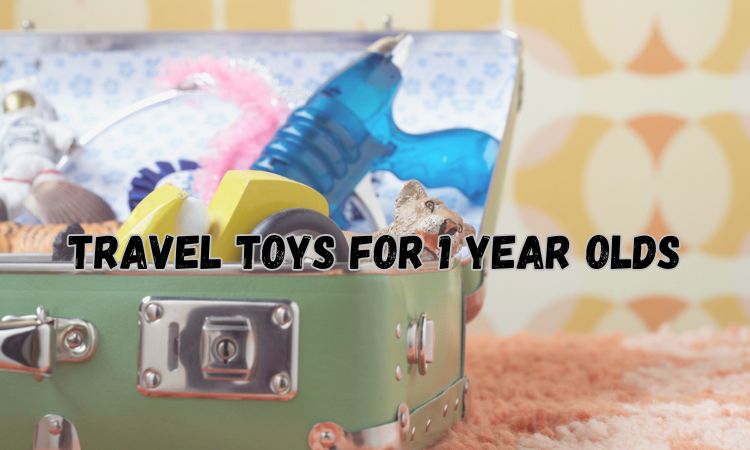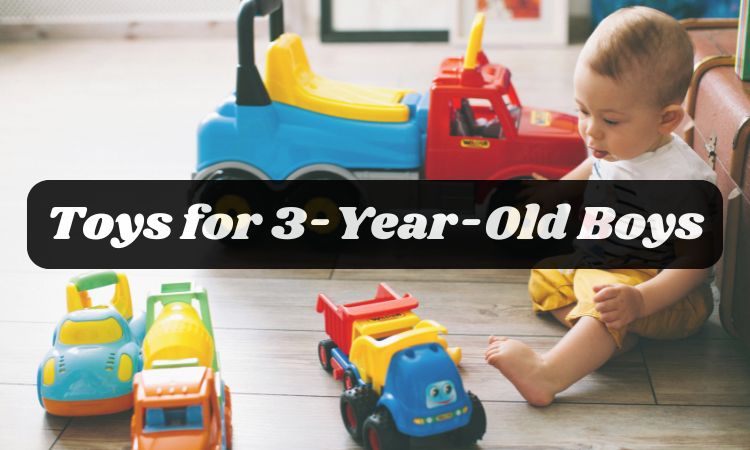If your newborn seems fussy for no clear reason—clenching their tiny fists, squirming, or letting out sharp cries—it might be gas. Yep, gas is super common in babies, especially in those first few months when their little digestive systems are still figuring things out.
As a new parent, it can be tough to see your baby uncomfortable, but don’t worry. There are simple, proven ways to bring them relief. In this guide, we’ll walk through what causes gas, how to tell if that’s what’s bothering your baby, and most importantly, how to soothe newborn gas so you can both breathe a little easier.

What Causes Gas in Newborns
Before you dive into the relief methods, it helps to know why do newborns have gas in the first place. Gas is almost always a normal by-product of feeding and digestion during the first few months of life. A baby’s gut and feeding skills are still under construction, so a handful of everyday factors can trap extra air or create more fermentation in the intestines. Here are the big ones:
Swallowed Air: The #1 Culprit
If you’re wondering, why is it normal for newborns to be gassy, swallowed air is the #1 culprit. When babies drink milk or cry, they naturally gulp air as well. Fast sucking at the breast or bottle—and a long crying spell—can send pockets of air straight to the tummy, leaving your little one squirmy and uncomfortable.
Immature Digestive Muscles
During the first three-to-four months, the intestinal muscles that move milk along (peristalsis) are still learning their rhythm. That means bubbles get “stuck” more easily, and gas pains peak in the newborn stage before easing later in infancy.
Wondering when does gas get better in newborns exactly? Well, it usually peaks around 6 weeks, eases noticeably by the end of the third month, and most babies leave the worst of it behind by 4–6 months.
Rapid Milk Flow or Poor Latch
An over-active let-down, a bottle nipple that flows too quickly, or a shallow latch can make your baby gulp and splutter—swallowing even more air in the process.
Bottle & Formula Factors
Shaking powdered formula whips in air bubbles, and certain bottle designs send those bubbles right into baby’s tummy. On top of that, proteins in standard cow’s-milk formula can irritate some infants’ guts and trigger gassy discomfort.
Food Sensitivities From Mom’s Diet
Most breast-fed babies handle whatever you eat just fine, but a small number react to certain foods in your diet that pass into breast milk, leading to extra gassiness and fussiness after feeds.
So, what foods make newborn gassy breastfeeding? While there’s no definitive proof, the following are most often flagged by parents and providers:
- Dairy products (cow’s-milk protein): not just cheese, milk, yogurt, but ice cream and any processed foods containing casein
- Soy, egg, wheat, peanut/tree-nut, and fish proteins
- Cruciferous veggies: broccoli, cabbage, brussels sprouts, cauliflower, beans, and lentils
- Alliums and spicy, strong-flavored foods
- Chocolate, coffee and other caffeine sources
- Dizzy and artificially sweetened drinks
Overfeeding or “Power-Guzzling”
When a baby takes more milk than the stomach can comfortably handle, the excess may ferment and create gas. Overfull feeds also make babies swallow extra air, compounding the problem.
Extended Crying (Aerophagia)
Long bouts of crying aren’t just stressful for you—they force babies to inhale and swallow air repeatedly, which later shows up as big burps or trapped lower-belly gas.
How to Tell If a Newborn Is Gassy
Since your little one can’t say, “Hey, Mom, my tummy feels weird,” you’ll have to look for body language and other clues. Here are the most common signs:
- Sudden Fussiness After Feeding: Your baby calms while eating but becomes squirmy, turns red, and cries 5–20 minutes later. That lag is classic gas trying to move through the gut.
- Knees-to-Chest Posture: You’ll notice your baby instinctively pulls their legs up or curls into a “froggy” position—both are natural attempts to relieve pressure.
- Tummy Swells and Feels Firm: A gassy belly may look rounder than usual, and when you gently press, it can feel tight (but not painful).
- Frequent Burps…or None at All: Lots of small burps signal swallowed air. Conversely, a total lack of burping followed by discomfort hints that air is trapped farther down.
- Excessive Farting: If your newborn passes gas noticeably more after certain feeds, that’s a tip-off the meal created extra bubbles.
- Arching the Back or Clenching Fists: Both moves usually accompany a hard cry and mean, “My tummy isn’t happy!”
How to Soothe Newborn Gas
The good news is that most gas pain can be eased with a few simple tweaks to the way you feed, move, and comfort your baby. Below are step-by-step, pediatrician-approved strategies for how to prevent gas in newborns and provide fast relief when it occurs:
1. Create a Calm, Air-Smart Feeding Routine
- Feed before the meltdown. Offer the breast or bottle while your baby is still showing early hunger cues (rooting, lip-smacking). When babies cry hard, they gulp air as well as milk, which blows up their tummies.
- Keep the head higher than the tummy. Hold your baby at a slight incline or use a nursing pillow so gravity keeps milk flowing down and air rising up.
- Slow the flow. If bottle-feeding, a slow-flow nipple and paced bottle feeding let your baby pause and swallow at their own rhythm, cutting back on air intake.
- Stir—don’t shake—formula. Shaking traps bubbles; stirring and letting the bottle rest a minute lets air rise to the top instead of your baby’s belly.
- Try an anti-colic bottle or vented insert. Some vent systems are “clinically proven” to lower burping, spit-up, and gas by keeping bubbles out of the nipple.
2. Burp Early, Burp Often
Pause halfway through each feed—and again at the end—to coax out hidden bubbles. Over-the-shoulder and sitting-up “armrest” burping positions are pediatrician favorites; aim for mid-back pats rather than tiny shoulder taps.

3. Put Motion and Position to Work
- Bicycle legs & knees-to-chest. Lying your baby on the back, gently pedal or press their knees toward the abdomen to help gas pockets move along the intestines.
- Supervised tummy time. A few minutes on the belly provides gentle pressure that pushes out trapped air while building neck strength—just wait at least 20 minutes after a feed.
- Keep baby upright after meals. Holding your newborn against your chest or in a carrier for 20–30 minutes lets gravity aid digestion.
4. Add Gentle Tummy Pressure and Warmth
A clockwise belly massage (“I-Love-You” strokes) or “walking” your fingertips across the tummy can physically move gas bubbles.
Follow with a warm towel or bath; the heat relaxes abdominal muscles and often triggers a bowel movement.
5. Offer Safe, Simple Remedies—Skip the Hype
- Simethicone drops. OTC gas drops are considered safe in standard doses, though they don’t help every baby. Check labels and talk to your pediatrician first.
- Gripe water? Evidence is weak, and products aren’t FDA-regulated, so many doctors advise against it unless you’ve discussed risks and benefits.
6. Bring in a Soothing Sidekick
While gentle motion and burping usually do the heavy lifting, a pacifier or calming audio can take the edge off those last stubborn cries—especially once you’ve laid baby down. A parent-friendly option is the Alilo baby music player.
It arrives with 76 hand-picked tracks—white noise, lullabies, nursery rhymes, and short bedtime stories—so you can match the vibe to the moment (play rhymes during tummy time, switch to steady rain sounds when gas cramps strike). The soft silicone bunny ears glow in rotating pastel hues, doubling as a night-light, and the shell is tough enough to survive the inevitable drop from the couch.
Need something special? Pair it to your phone over Bluetooth or drag-and-drop extra MP3s via USB-C. A single charge lasts about six hours, then the auto-sleep mode kicks in so you’re not hunting for an off button in the dark.
Just twist the little bunny-tail knob to nudge the volume up or down. In short, it’s one gadget that keeps your hands free and gives your baby a comforting soundtrack along the way.

When Should You Worry? Gas or Something Else?
Most bouts of newborn gas are normal and clear up after a good burp, a toot, or the soothing tricks you just learned. Still, some symptoms signal that the discomfort is not just gas and a quick call to your pediatrician—or a trip to the ER—makes sense.
Consult your pediatrician immediately if you notice any of the following symptoms while your baby is gassy:
- Fever ≥ 100.4 °F (38 °C) in a baby under 2 months
- Projectile or forceful vomiting—especially after every feed
- Green or yellow (bilious) vomit
- Bloody or mucus-streaked stool
- Hard, swollen belly or no poop for more than 1–2 days with vomiting
- Poor weight gain or weight loss
- Signs of dehydration (fewer than six wet diapers, sunken fontanelle, dry mouth, lethargy)
- Persistent crying for more 3 hours a day or 3 days a week for 3 weeks plus other red flags
Keep a quick log of feeds, wet/dirty diapers, cry episodes, and temperatures. Sharing this snapshot helps your healthcare provider spot patterns fast. You know your baby best. If something feels “off”—even if it doesn’t tick the box above—reach out.
Conclusion
Dealing with a gassy newborn isn’t easy, but it’s something most parents go through. As we’ve learned, simple techniques like proper burping, thoughtful positioning, and regular tummy time can make a big difference. Once you get the hang of these go-to methods for how to soothe newborn gas, those stressful moments will start to feel a whole lot easier.
Just remember: some gas is normal, but if your baby seems to be in a lot of pain or you’re worried it could be something more, it’s always best to check in with your pediatrician. Trust your gut, take it one step at a time, and know that comfort (for both of you!) is absolutely within reach.
FAQ
How do you calm a gassy newborn?
Start with the basics: burp midway and again when the meal is over. Once the feed is done, hold your baby upright for 20 minutes, then try gentle moves like bicycle legs, tummy time on a play-mat, or a slow, clockwise belly massage. These tricks help trapped bubbles migrate south and usually settle fussiness within minutes.
How do you get gas out of a crying baby?
First, soothe the tears—a pacifier, white-noise machine, or soft rocking can calm the nervous system and stop extra air-swallowing. When your baby’s breathing slows, place them upright against your chest and give firm, rhythmic pats or gentle back rubs to release hidden burps. If cries return, lay baby on their back and pedal the legs or bring the knees toward the belly; wait at least 20 minutes after feeding before any tummy-time pressure.
How do you get trapped air out of a baby?
A good burping session—whether over your shoulder, sitting upright, or tummy-down on your lap—usually helps. If the air seems stubborn, try laying them on their back and gently massaging their cute tummy in circular motions or pedal their legs. Plus, a warm bath or a heated towel across the abdomen relaxes tight belly muscles and often leads to a satisfying toot or poop.
Does a pacifier help with gas?
A pacifier doesn’t expel gas, but the sucking reflex is a powerful calmer. When your baby latches onto a pacifier instead of screaming, they swallow less air and relax their abdominal muscles—two small wins that can ease gas discomfort. Just offer it after, not before, feeds so it doesn’t mask hunger cues and keep it clean. If your little one isn’t interested, don’t force it.







Share and get 5% off!
Simply share this product on one of the following social networks and you will unlock 15% off!